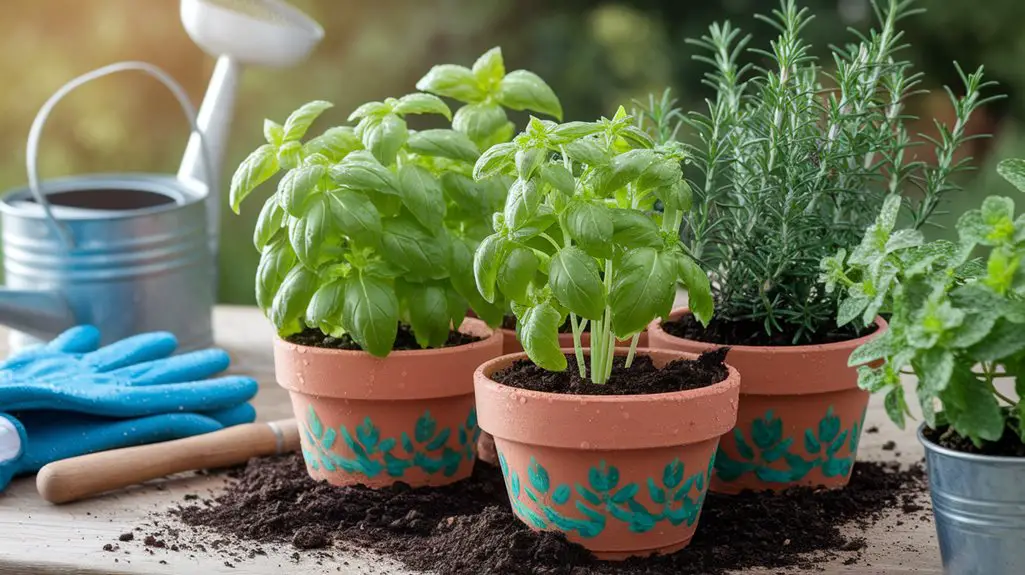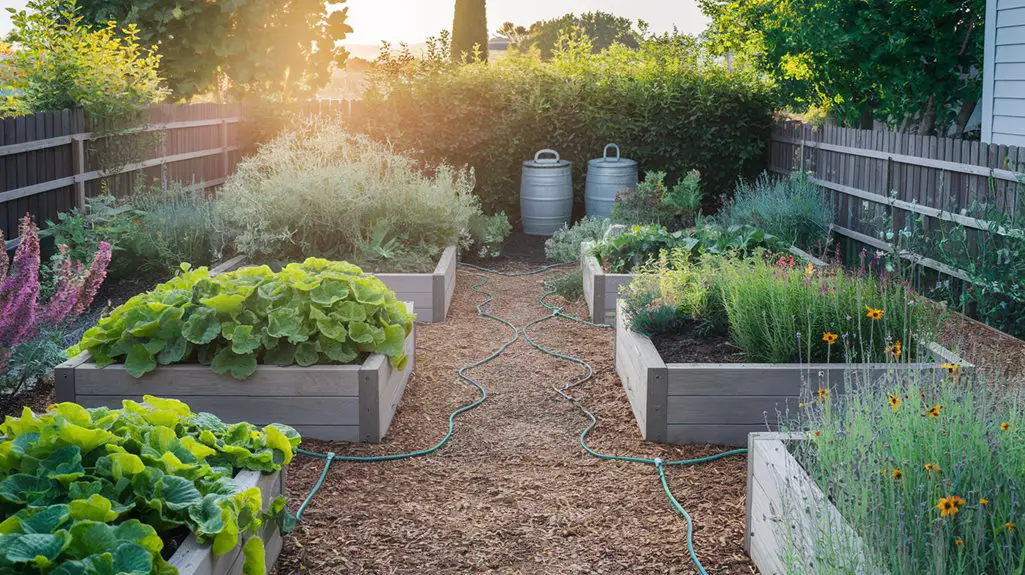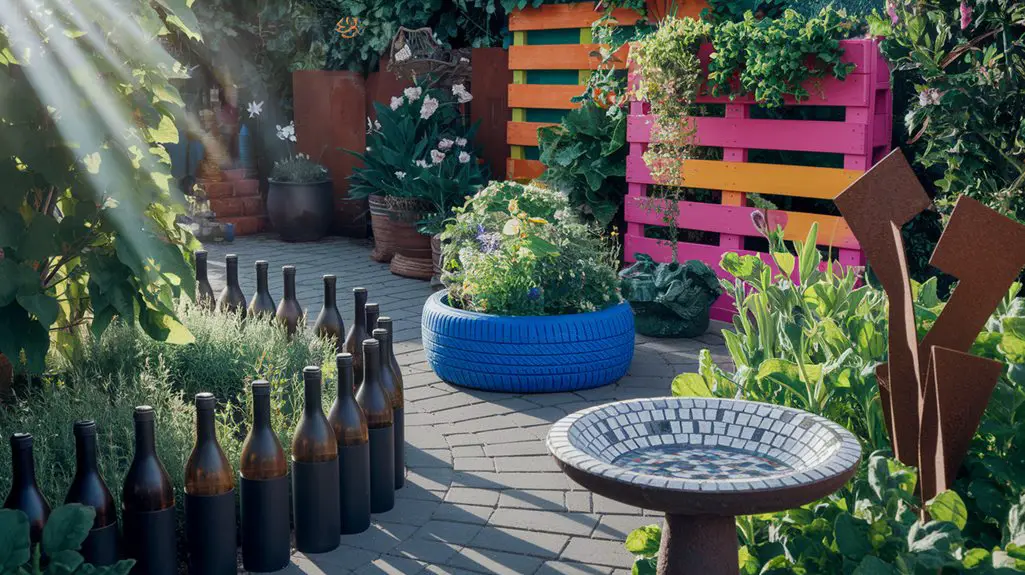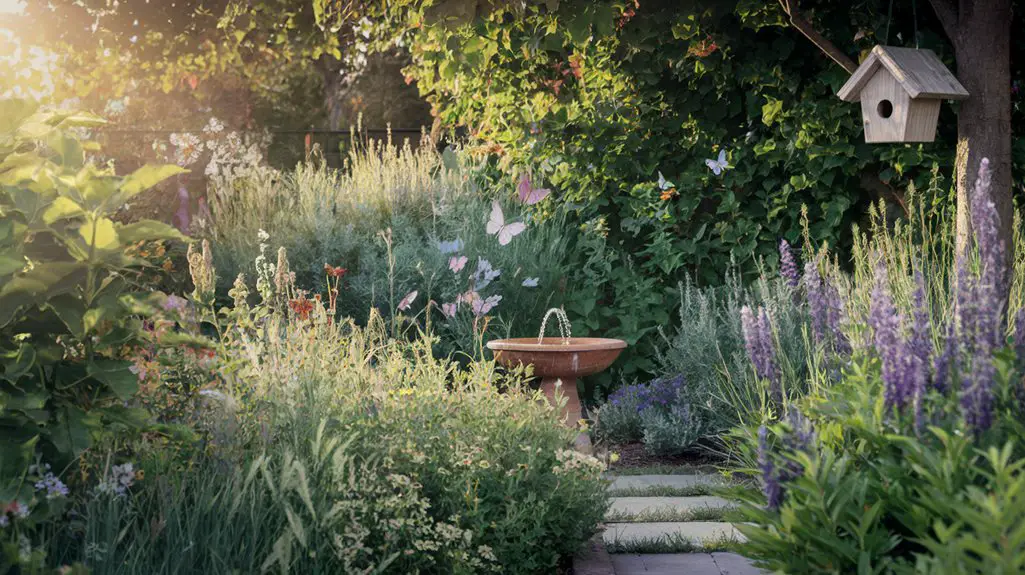A small herb garden symbolizes the delicate balance between nature's bounty and human care. You'll find that growing your own herbs transforms both your cooking and your connection to seasonal rhythms. Whether you're a novice or experienced gardener, three key factors determine your success: selecting climate-appropriate varieties, preparing ideal soil conditions, and establishing proper watering routines. Master these fundamentals, and you'll soon harvest fragrant, flavorful herbs throughout the growing season.
Selecting the Right Herbs for Your Climate Zone
Why do some herb gardens thrive while others struggle? The answer often lies in selecting herbs suited to your specific climate zone. Each USDA hardiness zone supports different herb varieties, and matching plants to your region dramatically increases success rates.
For cold regions (zones 3-5), focus on hardy perennials like chives, mint, and thyme.
Mediterranean herbs such as rosemary, oregano, and lavender thrive in warmer zones (6-10) with well-drained soil.
In hot, humid areas (zones 8-11), consider heat-tolerant options like lemongrass, Cuban oregano, and Mexican tarragon.
Don't fight your climate—work with it. Additionally, incorporating beneficial insects into your herb garden can greatly enhance plant health and productivity.
Check your zone's first and last frost dates, annual rainfall, and summer temperature peaks before purchasing herbs. This targeted approach guarantees you'll grow varieties that naturally flourish in your environment.
Optimal Soil Preparation and Container Choices
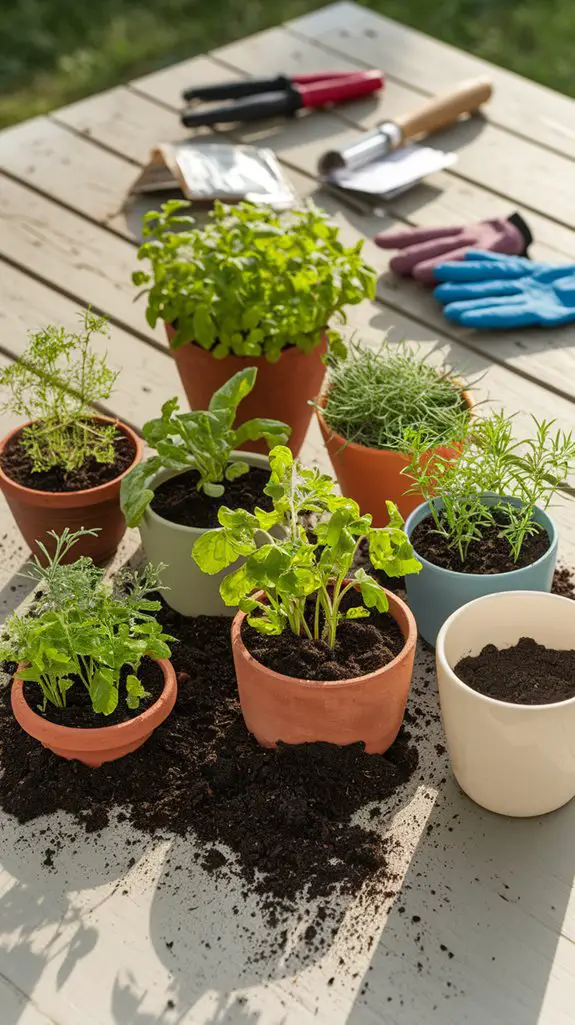
After selecting climate-appropriate herbs, your next step involves preparing the right growing environment. Most herbs thrive in well-draining soil with a pH of 6.0-7.0.
Create a custom mix using equal parts quality potting soil, perlite, and compost for ideal drainage and nutrition.
Choose containers based on herb root depth—shallow-rooted herbs like thyme need only 6-inch pots, while rosemary and lavender require 12-inch depths.
Confirm all containers have drainage holes. Terra cotta pots provide excellent breathability but dry out quickly, while glazed ceramic retains moisture longer.
For in-ground gardens, incorporate 2-3 inches of compost into your existing soil and create raised beds if your native soil tends to be heavy clay. Raised garden beds can improve drainage and provide a more controlled growing environment for your herbs.
You'll need to amend poor soil annually to maintain herb health.
Proper Watering and Maintenance Techniques
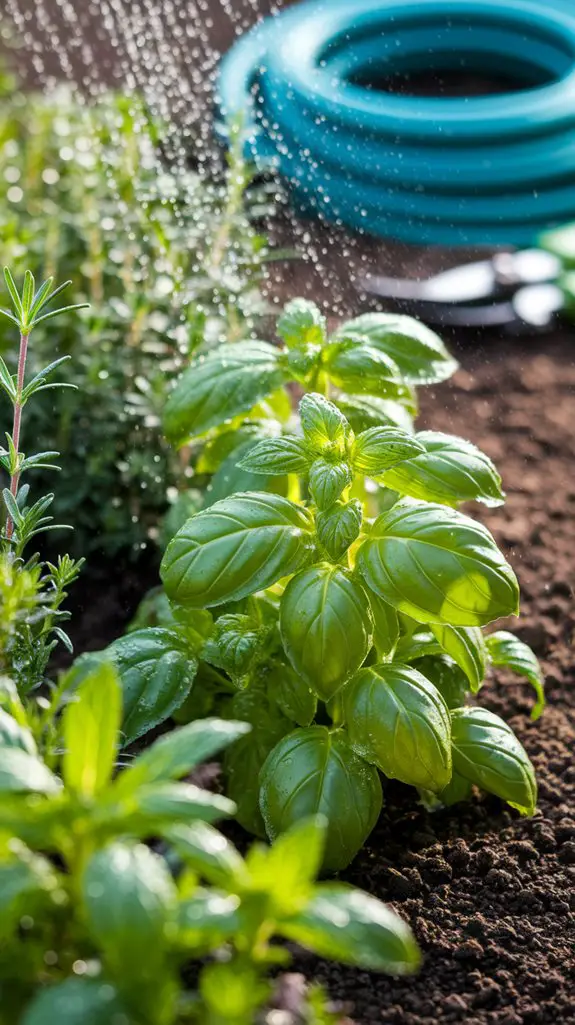
Proper watering remains the most critical factor in herb garden success, with different varieties requiring tailored hydration schedules.
Mediterranean herbs like rosemary, thyme, and sage prefer drying out between waterings, while basil and mint need consistently moist soil. Always check the top inch of soil—if it's dry for moisture-loving herbs, it's time to water.
During summer heat, water deeply in the morning to prevent evaporation.
In winter, markedly reduce watering frequency as growth slows. Apply a balanced liquid fertilizer monthly during growing season at half-strength to avoid bitter-tasting herbs.
Remove spent flowers promptly to encourage leaf production, and harvest regularly by cutting stems just above a leaf node.
This strategic pruning stimulates bushier growth and extends your herbs' productive lifespan. Additionally, consider incorporating a raised bed herb garden to improve drainage and ease of access for maintenance and harvesting.
Conclusion
You'll find fresh flavors flourishing with just a few focused fundamentals. Remember to research reliable regional varieties, prepare precise potting mixes, and provide proper plant hydration. Whether you're cultivating culinary classics or medicinal marvels, your seasonal herb garden will reward your diligence with delightful diversity. Master these methods, monitor moisture meticulously, and you'll enjoy endless edible enjoyment from your perfectly planned patch.

